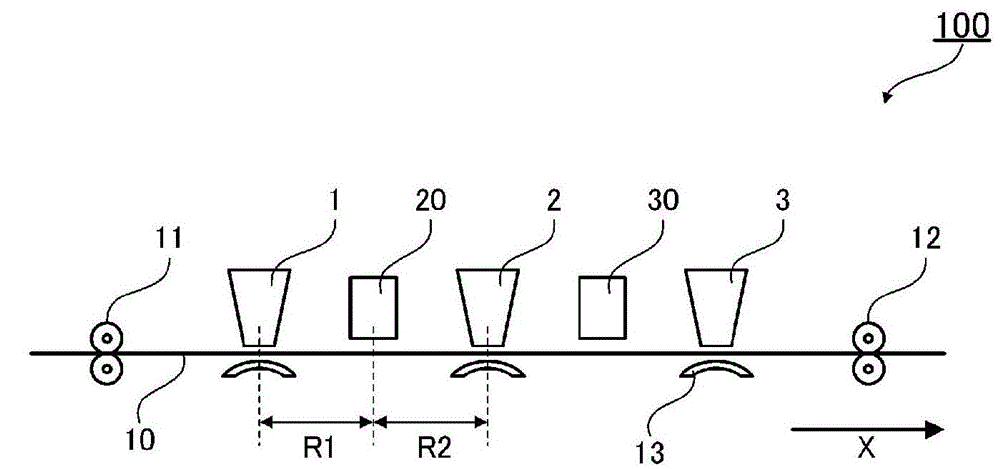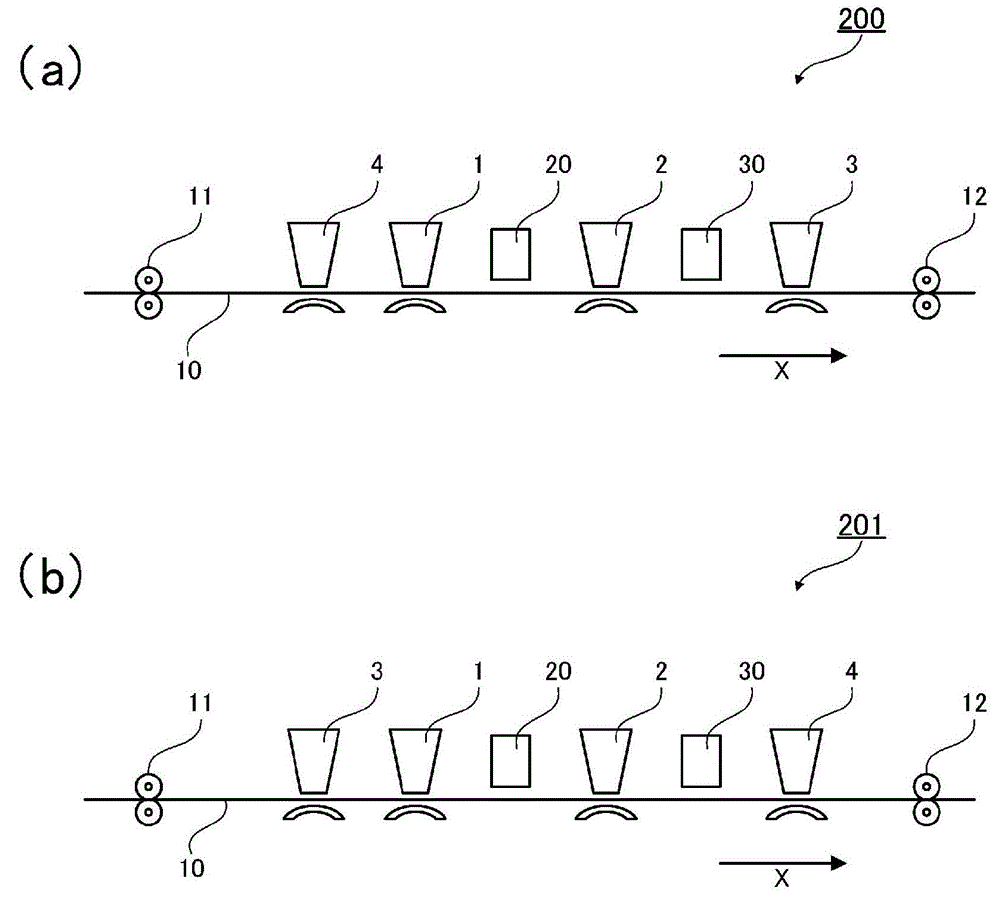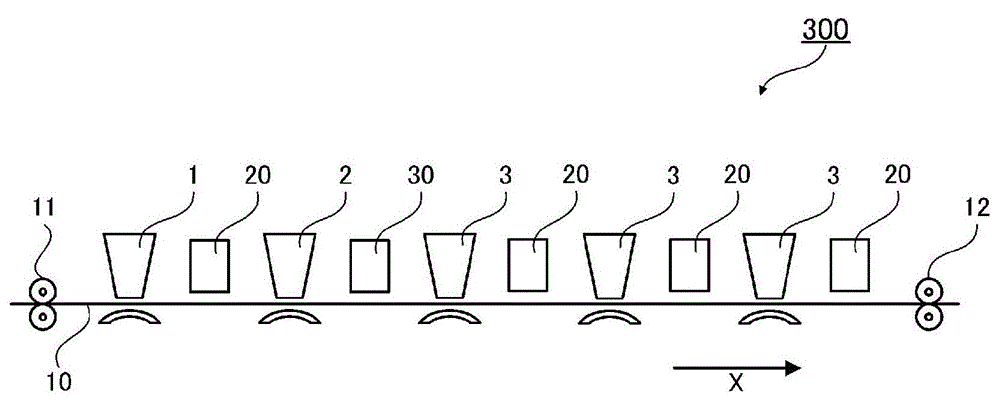Inkjet recording device and recorded matter
An inkjet recording and recording medium technology, applied in printing devices, copying/marking methods, printing, etc., can solve the problems of complicated recording process and limited recording medium, etc.
- Summary
- Abstract
- Description
- Claims
- Application Information
AI Technical Summary
Problems solved by technology
Method used
Image
Examples
preparation example Construction
[0174] 5.1. Preparation of ink
[0175] 5.1.1. Preparation of polymeric ink
[0176] The polymerizable ink was prepared by mixing a photopolymerization initiator, a polymerizable compound, a polymerization inhibitor, and a surfactant according to the composition described in Table 1. In addition, IRGASTABUV-22 (manufactured by Ciba Corporation) was used as a polymerization inhibitor, and BYK-UV3500 (manufactured by BYK Japan KK) was used as a surfactant.
[0177] Table 1
[0178]
[0179] 5.1.2. Preparation of glossy ink
[0180] Glitter inks were prepared as follows.
[0181] First, polyvinylpyrrolidone (PVP, weight average molecular weight: 10,000) was heated at 70° C. for 15 hours, and then cooled at room temperature. A PVP solution was prepared by adding 1000 g of this PVP to 500 ml of ethylene glycol solution. In another container, add 500ml ethylene glycol, add 128g silver nitrate and fully stir with an electromagnetic stirrer to prepare silver nitrate solution. ...
Embodiment 12
[0245] In Example 12, the polymerizable ink described in Table 1 was recorded on the recording medium shown in Table 2 in a predetermined pattern with a predetermined duty ratio. Then, the recording with the glossy ink was performed at the duty ratios shown in Table 2 thereafter. Finally, the irradiation energy described in Table 2 was irradiated. It should be noted that the irradiation step was performed at the irradiation energy described in Table 2 per 100% duty ratio.
Embodiment 13
[0247] In Example 13, the white-based ink described above was recorded on the recording medium shown in Table 2 at a duty ratio of 100%. Thereafter, the polymerizable ink described in Table 1 was recorded in a predetermined pattern with a predetermined duty ratio shown in Table 2. Then, the irradiation energy described in Table 2 was irradiated. It should be noted that the irradiation step was performed at the irradiation energy described in Table 2 per 100% duty ratio. Finally, the recording of the glossy ink was carried out at the duty ratios listed in Table 2.
[0248] 5.3.4. Comparative example 1~4
[0249] The glossy inks shown in Table 2 were applied to the recording media shown in Table 2 in a predetermined pattern with a % duty ratio shown in Table 2 to form an image.
PUM
| Property | Measurement | Unit |
|---|---|---|
| particle size | aaaaa | aaaaa |
| surface roughness | aaaaa | aaaaa |
| surface roughness | aaaaa | aaaaa |
Abstract
Description
Claims
Application Information
 Login to View More
Login to View More - R&D
- Intellectual Property
- Life Sciences
- Materials
- Tech Scout
- Unparalleled Data Quality
- Higher Quality Content
- 60% Fewer Hallucinations
Browse by: Latest US Patents, China's latest patents, Technical Efficacy Thesaurus, Application Domain, Technology Topic, Popular Technical Reports.
© 2025 PatSnap. All rights reserved.Legal|Privacy policy|Modern Slavery Act Transparency Statement|Sitemap|About US| Contact US: help@patsnap.com



